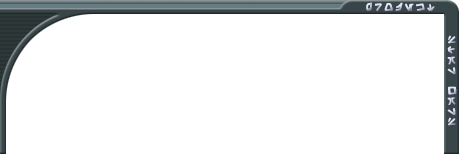App installieren
How to install the app on iOS
Follow along with the video below to see how to install our site as a web app on your home screen.

Anmerkung: This feature currently requires accessing the site using the built-in Safari browser.
Du verwendest einen veralteten Browser. Es ist möglich, dass diese oder andere Websites nicht korrekt angezeigt werden.
Du solltest ein Upgrade durchführen oder einen alternativen Browser verwenden.
Du solltest ein Upgrade durchführen oder einen alternativen Browser verwenden.
Neue Bilder aus dem Weltall
- Ersteller Horatio d'Val
- Erstellt am
Horatio d'Val
Ritter der Kokosnuss
Einfach nur ein genial-schönes Bild!!!! Da möchte man einfach nur Astronaut werden und hinfliegen!Original geschrieben von Mandalore
B33 oder Pferdekopf-Nebel (Datei zu groß)

Ist zwar auch schön, wirkt aber irgendwie wie eine Disco-Lampe!Ganz besonders faszinierend der planetarische Nebel CLR 2688

Mandalore
Sarlacc-Futter
Original geschrieben von Horatio d'Val
Ist zwar auch schön, wirkt aber irgendwie wie eine Disco-Lampe!
Gerade deshalb faszinierend! Solche Erscheinungen sind nicht gerade häufig.
Bah, lass mir doch meine VerschwörungstheorienOriginal geschrieben von Darth Arthious
Es ist nicht gesagt dass etwas rausgeschnitten wurde. Wahrscheinlicher ist imo das Bild 7 aus mehreren Einzelbildern zusammengesetzt wurde und eben dieser Teil fehlt (warum auch immer).
 ...
...Hm, M104 erinnert mich an die Ringwelt...
Darth Layne Staley
loyale Senatswache
Bei all den Bildern kriegt man Lust sich hinzusetzen und einen Hyperraumantrieb in seinen Fiat Uno Bj 1986 einzubauen.... schade das mir die Fähigkeiten fehlen.... stellt euch vor ihr seht das aus dem Cockpit des Falken.... *träumträumträumträumträumträumträumträum*







Horatio d'Val
Ritter der Kokosnuss
Original geschrieben von Darth Layne Staley
Bei all den Bildern kriegt man Lust sich hinzusetzen und einen Hyperraumantrieb in seinen Fiat Uno Bj 1986 einzubauen.... schade das mir die Fähigkeiten fehlen.... stellt euch vor ihr seht das aus dem Cockpit des Falken.... *träumträumträumträumträumträumträumträum*



*seufz* jaaaaa
Und dazu die passende Musik, die leise im Hintergrund dudelt....

Col.Wolf
Podiumsbesucher
Echt superklasse schöne Bilder
ich stöbere auch hin und wieder mal auf diesen Seiten,und muss Darth Layne Staley absolut beipflichten.Die Natur kann man wirklich nicht übertreffen.
Was sich dort abspielen muss bei einer Kollision von zwei Galaxien.Ganze Sonnen und Planetensysteme treffen aufeinander.Absoluter Wahnsinn,was da abgehen muss.Die Energien die da freigesetzt werden müssen,sprengen jede vorstellungskraft.
Wir kleinen Krümelkacker mit unseren Nuklearwaffen,denken wir haben die Böller schlechthin.Die sehn dagegen aus wie Mikrominiatur-Knallerpsen.Wir sind nur Staubpartikel in diesem Ur-alten gigantischen und Majestätischen und gnadenlosen Universum.

ich stöbere auch hin und wieder mal auf diesen Seiten,und muss Darth Layne Staley absolut beipflichten.Die Natur kann man wirklich nicht übertreffen.
Was sich dort abspielen muss bei einer Kollision von zwei Galaxien.Ganze Sonnen und Planetensysteme treffen aufeinander.Absoluter Wahnsinn,was da abgehen muss.Die Energien die da freigesetzt werden müssen,sprengen jede vorstellungskraft.
Wir kleinen Krümelkacker mit unseren Nuklearwaffen,denken wir haben die Böller schlechthin.Die sehn dagegen aus wie Mikrominiatur-Knallerpsen.Wir sind nur Staubpartikel in diesem Ur-alten gigantischen und Majestätischen und gnadenlosen Universum.
Boba Fett_1
Dienstbote
Die bilder sind wirklich klasse wobei man bei star wars nicht viel soetwas seht meisten nur sterne -schade
Darth Layne Staley
loyale Senatswache
@Boba Fett
Tja, heißt ja auch Starwars und nicht Nebula Wars oder so


Die bilder sind wirklich klasse wobei man bei star wars nicht viel soetwas seht meisten nur sterne -schade
Tja, heißt ja auch Starwars und nicht Nebula Wars oder so



Astral ¯||¯
Sternenkrieger
Dank an Horatio für die wunderschönen Bilder!! Die sind einfach zu schön, daran kommt SW wirklich nicht ran....HST ist eine der besten Errungenschaften der letzten Zeit muss ich immer wieder sagen!
Hm..irgendwie schon merkwürdig: wir können 14 mia in die vergangenheit sehen. noch eine mia mehr, dann sehen wir unsern ursprung..wir beobachten den beginn des seins. also bei mir beginnt es da zu spinnen...mir kommt gerade in den sinn, das kann man doch schon messen/sehen: die kosmische hintergrundstrahlung. auf jeden fall: verdammt spannend!
Hier noch etwas wunderschönes!....Ist unsere Welt nicht schön? Ich finde ja....mir kommt bei stonehenge-bildern immer den zeitungsbeitrag in den sinn, den ich mal gelesen habe. einen seeehr ernüchterneden beitrag! geht schon fast unter spoiler...die stonehenge bestand vor hundert jahren aus lauter umgekippten steinen, und zwar alle! die grossen wurden dann mal wieder aufgestellt und mit beton festgemacht. in den touristenführeren steht nichts mehr davon. offiziell stehen sie seit tausenden von jahren....so, jetzt wisst ihr die erschreckende wahrheit...
Dafür würde ich alles geben! Wenn ich mal 20 mio zu viel habe, melde ich mich bei den Russen für einen ISS-Besuch an.Bei all den Bildern kriegt man Lust sich hinzusetzen und einen Hyperraumantrieb in seinen Fiat Uno Bj 1986 einzubauen.... schade das mir die Fähigkeiten fehlen.... stellt euch vor ihr seht das aus dem Cockpit des Falken.... *träumträumträumträumträumträumträumträum*:rolleye
Hm..irgendwie schon merkwürdig: wir können 14 mia in die vergangenheit sehen. noch eine mia mehr, dann sehen wir unsern ursprung..wir beobachten den beginn des seins. also bei mir beginnt es da zu spinnen...mir kommt gerade in den sinn, das kann man doch schon messen/sehen: die kosmische hintergrundstrahlung. auf jeden fall: verdammt spannend!
Hier noch etwas wunderschönes!....Ist unsere Welt nicht schön? Ich finde ja....mir kommt bei stonehenge-bildern immer den zeitungsbeitrag in den sinn, den ich mal gelesen habe. einen seeehr ernüchterneden beitrag! geht schon fast unter spoiler...die stonehenge bestand vor hundert jahren aus lauter umgekippten steinen, und zwar alle! die grossen wurden dann mal wieder aufgestellt und mit beton festgemacht. in den touristenführeren steht nichts mehr davon. offiziell stehen sie seit tausenden von jahren....so, jetzt wisst ihr die erschreckende wahrheit...
Zuletzt bearbeitet:
Garwain_Antilles
Zivilist
do it yourself
Doch aufregend ist es, sich Nebel und Planeten selbst mit einem Teleskop anzuschauen, auch wenn sie dann nicht "gaAaAaAaAanzzzz" so schön sind.
Dafür wird man aber mit einem tollen Gefühl entschädigt....
Doch aufregend ist es, sich Nebel und Planeten selbst mit einem Teleskop anzuschauen, auch wenn sie dann nicht "gaAaAaAaAanzzzz" so schön sind.
Dafür wird man aber mit einem tollen Gefühl entschädigt....
Horatio d'Val
Ritter der Kokosnuss
Wow, ich hätte trotz allem nicht gedacht, daß die Bilder soviel (positives) Feedback kriegen! 
Da fühle ich mich ja verprflichtet, regelmäßig sowohl auf die NASA, als auch andere Astronomie-Seiten zu gehen, um nach neuen (oder alten) Bildern zu suchen.....!
Also nochmal für Interessenten:
NASA und dort auf die Multimedia Galery
@Astryn
Also ich hab' keine Foto von unsere Galaxie gefunden, die Voyager-Sonde ist glaub' ich auch noch nicht so weit geflogen!

Ein adequat ähnliches Foto habe ich leider auch nicht gefunden, aber stelle Dir eine "handelsübliche", spriralförmige Galaxie vor.....und die Erde ist näher am Rand als am Zentrum!

Da fühle ich mich ja verprflichtet, regelmäßig sowohl auf die NASA, als auch andere Astronomie-Seiten zu gehen, um nach neuen (oder alten) Bildern zu suchen.....!

Also nochmal für Interessenten:
NASA und dort auf die Multimedia Galery
@Astryn
Also ich hab' keine Foto von unsere Galaxie gefunden, die Voyager-Sonde ist glaub' ich auch noch nicht so weit geflogen!


Ein adequat ähnliches Foto habe ich leider auch nicht gefunden, aber stelle Dir eine "handelsübliche", spriralförmige Galaxie vor.....und die Erde ist näher am Rand als am Zentrum!

Horatio d'Val
Ritter der Kokosnuss
Ok, hab' auf der Arbeit ein wenig Zeit gehabt  und bei der NASA mal ein paar ältere, aber ebenso schöne Bilder runtergeladen.
und bei der NASA mal ein paar ältere, aber ebenso schöne Bilder runtergeladen.
Bemerkungen:
Von allen Bildern gibt es zwei Versionen, eine Kleine, die ich hier poste und eine Große, die man auch wundervoll als Desktopmotive benutzen kann (die haben aber durchaus eine Größe von 500 KB oder mehr (als .jpg (!!!)).
Desweiteren habe ich die Originalnamen für die Bilder von der NASA-Page übernommen, damit verwechslungen vermieden werden können. Die Nummern für die Bilder sind also nicht auf meinem Mist gewachsen!
 und bei der NASA mal ein paar ältere, aber ebenso schöne Bilder runtergeladen.
und bei der NASA mal ein paar ältere, aber ebenso schöne Bilder runtergeladen.Bemerkungen:
Von allen Bildern gibt es zwei Versionen, eine Kleine, die ich hier poste und eine Große, die man auch wundervoll als Desktopmotive benutzen kann (die haben aber durchaus eine Größe von 500 KB oder mehr (als .jpg (!!!)).
Desweiteren habe ich die Originalnamen für die Bilder von der NASA-Page übernommen, damit verwechslungen vermieden werden können. Die Nummern für die Bilder sind also nicht auf meinem Mist gewachsen!

Horatio d'Val
Ritter der Kokosnuss
Übrigens:
Wie kann man mit dem Microsoft-Photoeditor die Bildgröße in KB minimieren? Leider sind einige Pics (und so ziemlich mit die schönsten) zu groß für einen Anhang hier im PSW!
Wie kann man mit dem Microsoft-Photoeditor die Bildgröße in KB minimieren? Leider sind einige Pics (und so ziemlich mit die schönsten) zu groß für einen Anhang hier im PSW!
Horatio d'Val
Ritter der Kokosnuss
Der Original-Text zu diesem Bild:
The picture at left shows the bubble in the center of the galaxy's disk. The structure is more than 3,000 light-years wide and rises 3,500 light-years above the galaxy's disk. The smaller photo at right is a close-up view of the bubble. Astronomers suspect that the bubble is being blown by "winds" (high-speed streams of particles) released during a burst of star formation. Gaseous filaments at the top of the bubble are whirling around in a vortex and are being expelled into space. Eventually, this gas will rain down upon the galaxy's disk where it may collide with gas clouds, compress them, and form a new generation of stars. The two white dots just above the bubble are probably stars in the galaxy.



